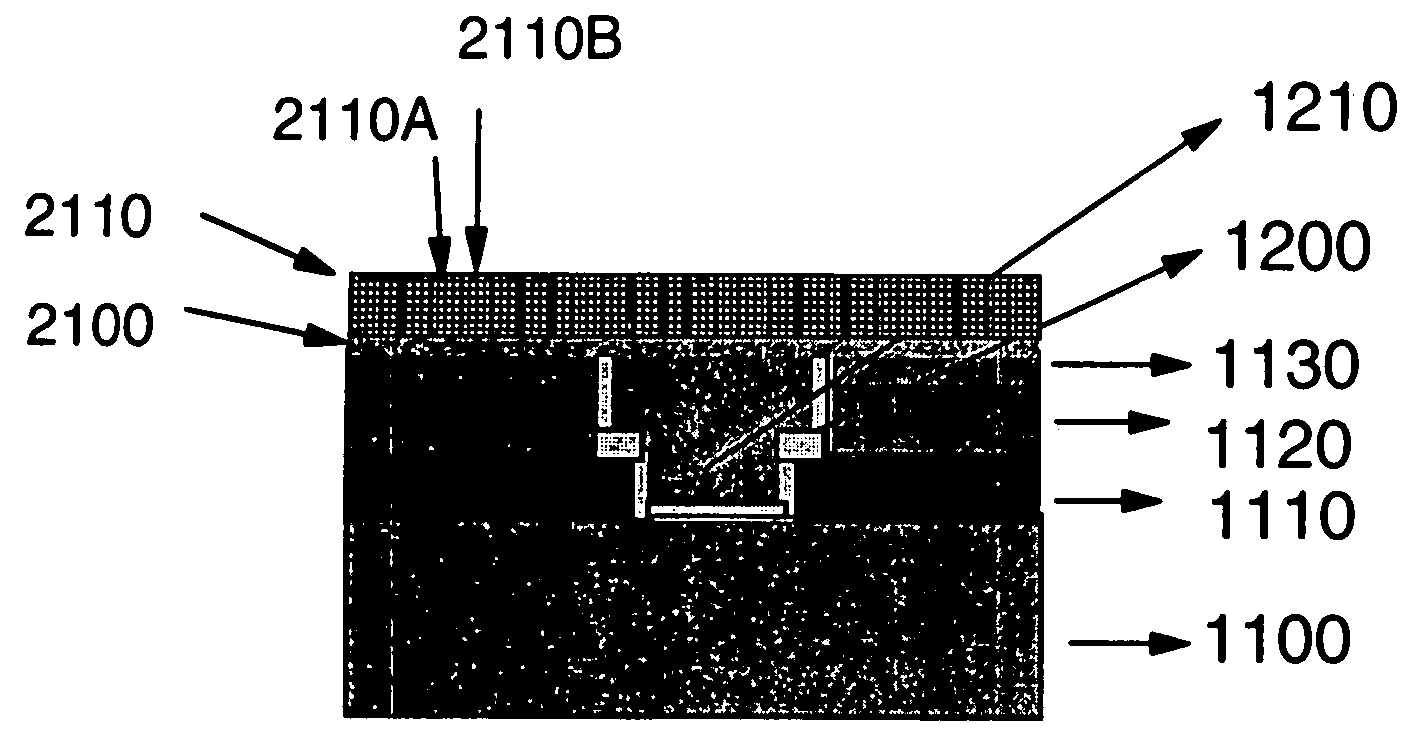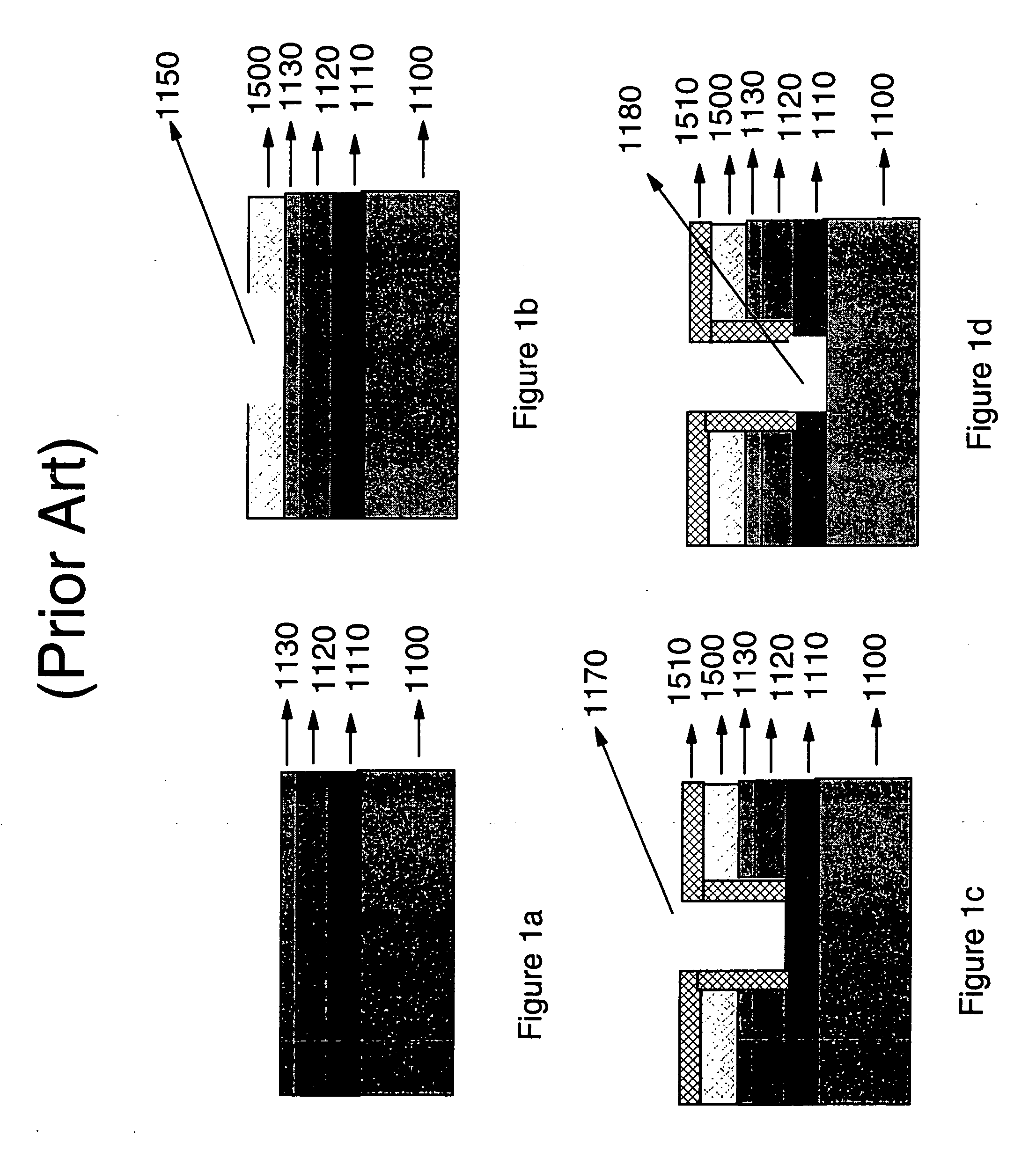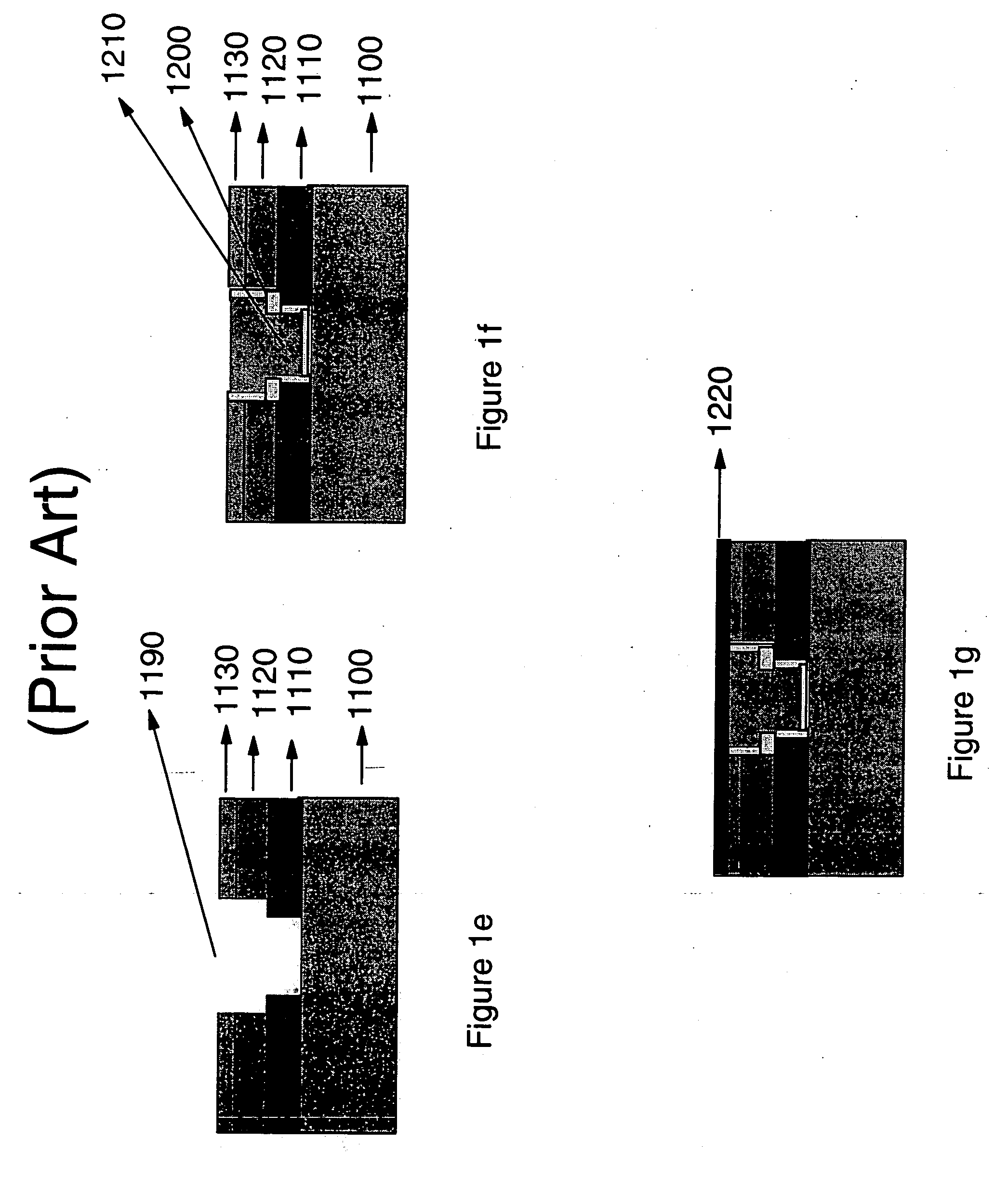Interconnect structures with engineered dielectrics with nanocolumnar porosity
a technology of nanocolumnar porosity and interconnect structure, which is applied in the manufacture of multilayer circuits, semiconductor devices, semiconductor/solid-state device details, etc., can solve the problems of fracture toughness and cohesive strength, the effective dielectric constant of the interconnect structure is reduced, and the overall speed of the operation of these advanced chips is beginning to be limited.
- Summary
- Abstract
- Description
- Claims
- Application Information
AI Technical Summary
Benefits of technology
Problems solved by technology
Method used
Image
Examples
first embodiment
[0031] The method of the first embodiment begins with the fabrication of a dual damascene interconnect structure comprising the prior art steps described earlier and depicted in the steps FIG. 1a through FIG. 1f resulting in embedded Cu lines coplanar with the IMD surface. The DD structure is built using IMD materials, which are preferably more robust compared with the very low k dielectrics described in the prior art. Such a robust IMD material can be selected from, but not restricted to, the set comprising (a) organic thermoset dielectrics such as polyarylene ethers (for example SiLK™ produced by Dow Chemical Company or GX3™ produced by Honeywell Microelectronic Materials) (b) spun on silica or organosilicate glass films, (c) hydrogenated amorphous dilectrics comprising Si, C, H and O and deposited by plasma enhanced chemical vapor deposition (PECVD), (d) undoped silicon oxide glass (USG) and fluorine doped silicon oxide glass (FSG) deposited by PECVD, (e) porous versions of (a)-(...
embodiment 2
[0044] In another embodiment (embodiment 2) of this inventive method, illustrated in FIG. 3, the following sequence of steps is additionally performed after the holes 2160 (and holes 2170 and 2180 by analogy) are formed into the IMD and the diblock polymer layer has been etched away.
[0045] An additional RIE step is performed to etch and recess the IMD layer 1130 and optionally a small depth into layer 1120 so that the etched surface is recessed below the surface of the conductive fill 1210 in the structure as shown in FIG. 3a. This recess 3000 is chosen to be about 10 nm to 60 nm but preferably about 20 nm.
[0046] The pinch off dielectric cap 2170 is then deposited such that it pinches off the holes 2160 in the recessed region created above, and covers over the surface of conductive fill 1210.
[0047] An optional CMP step can be employed to planarize the surface of dielectric cap 2170. The net result of this sequence of steps is to provide a non perforated dielectric region 2171 in g...
third embodiment
[0049] In the present inventive method, the nanocolumnar diblock stencil film 2110 is generated as described earlier in reference to FIG. 2, except that the structure is generated on a cap layer dielectric 1220 formed on top of the state of the art interconnect structure as exemplified in FIG. 1g. This is shown schematically in FIG. 4a. The remaining matrix 2140 of the stencil is used to transfer the pattern into the cap dielectric layer 1220 resulting in a perforated cap layer dielectric 4000 which rests on the top IMD layer 1130. This transfer process is performed by reactive ion etching. The nanoscale pattern in the perforated cap layer dielectric is then transferred into the IMD stack using the matrix 2140 and patterned cap layer dielectric 4000 as a mask as shown in FIG. 4b. The nanoscale pattern is transferred into the IMD stack 1110, 1120, 1130 generating columnar holes 4010. Analogous structures to those in FIGS. 2f and 2g can also be generated by adjusting the depth of the ...
PUM
 Login to View More
Login to View More Abstract
Description
Claims
Application Information
 Login to View More
Login to View More - R&D
- Intellectual Property
- Life Sciences
- Materials
- Tech Scout
- Unparalleled Data Quality
- Higher Quality Content
- 60% Fewer Hallucinations
Browse by: Latest US Patents, China's latest patents, Technical Efficacy Thesaurus, Application Domain, Technology Topic, Popular Technical Reports.
© 2025 PatSnap. All rights reserved.Legal|Privacy policy|Modern Slavery Act Transparency Statement|Sitemap|About US| Contact US: help@patsnap.com



